
A wildfire early warning system
Every year, forest fires take a huge toll all over the world. In 2021, the United States alone spent more than US$4 billion fighting wildfires. Better ways to spot and douse the flames before they roar out of control are needed, and that is where Berlin-based start-up Dryad Networks has stepped in.
The company has developed a small solar-powered sensor that can be mounted on trees. This “electronic nose” can detect the hydrogen, carbon monoxide and other compounds that are released when a fire starts smouldering, alerting officials via wireless signal before smoke is even visible above the trees.
In a recent test run in Germany, the sensor picked up a (deliberately lit) fire within 14 minutes. It also provides exact GPS coordinates so firefighters can rush to the scene. Forest regions from California to the Italian island of Sardinia are now trying out these inexpensive sensors. Dryad aims to deploy 120 million of them by 2030, potentially saving a projected four million hectares from burning.
Read about how wildfire smoke affects your health.

A brain implant that overcomes paralysis
Stunning advances in neurotechnology are bringing real hope to people with spinal injuries. One man has been able to walk again simply by thinking about it, thanks to a digital brain-spine interface, created by Swiss researchers, that boosts neural signals damaged by the injury.
Gert-Jan Oskam, a 40-year-old from the Netherlands, has required a wheelchair since he was paralyzed in a cycling accident 12 years ago. But electronic implants in his brain now allow him to transmit his silent intentions to a receptor implanted in his spine. The implant then amplifies and sends signals to his legs and feet through his nerve cells.
“I feel like a toddler learning to walk again,” Oskam told BBC News.
The mechanism is still in the experimental stage, but experts say the research is very encouraging.
Next: Read about a girl with spina bifida who became an athlete despite not being expected to ever walk.
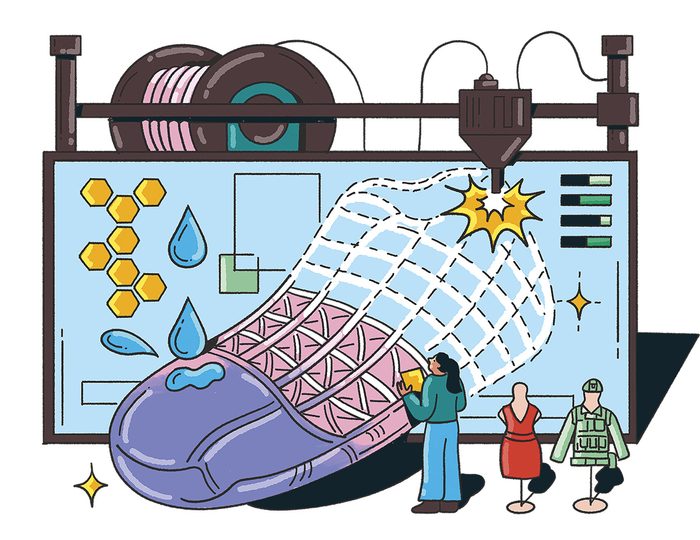
4D-printed clothes and other mind-bogglers
When it comes to what we wear, the stuff of fantasy is getting closer to reality, thanks to 4D printing. This new technology programs “smart” materials that, when printed in 3D, change shape and colour in response to external stimuli such as water, heat or light.
Picture a sponge or a memory-foam mattress that contracts and expands. These “smart” materials work similarly, but the programming makes it more intentional: 4D clothing can be triggered to lengthen, fold, flatten, bend or change colour. The U.S. military, for instance, has been testing uniforms that take on a camouflage pattern, depending on the soldier’s surroundings.
In other applications, scientists have created wearable gripping aids for people with limited use of their fingers, cardiovascular stents that expand and contract with your heartbeat and soft-tissue implants designed to release microdoses of medication.
Want to toss those baffling Ikea instructions out in favour of self-assembling furniture? 4D printing can also create a flat board that will curl up into a chair when you add heat.
The research, conducted by the MIT Self-Assembly Lab in Cambridge, Massachusetts, is in its early days, but its potential impact on health and industry is boundless.
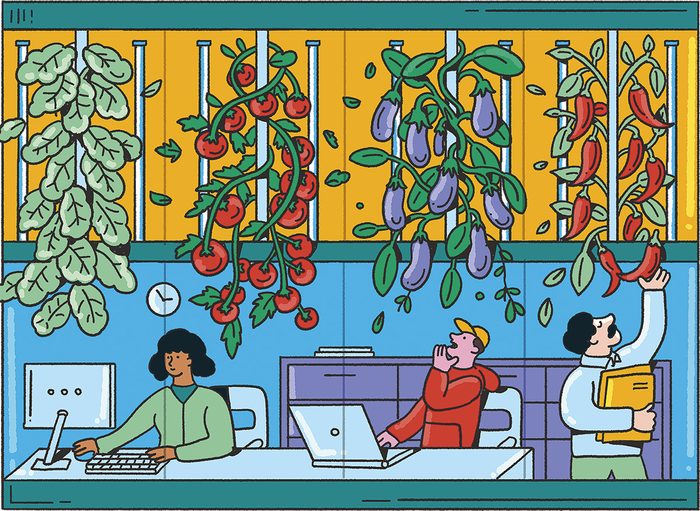
Elevated urban farming
Short on fresh produce this winter? No need to wait for those imports from South America. Just run down to the office for a head of lettuce.
No, seriously, in a growing number of downtowns, you can do just that: As more people opt to work from home, leaving office space vacant, some of the empty buildings—many of which are flooded with natural light—are being converted into indoor vertical farms.
Companies like Agriplay in Calgary and Area 2 Farms in Washington, D.C., are solving two problems at once: renting underused real estate and supplying fresh local food without relying on global supply chains.
In addition, Agriplay deploys a soil-less precision-sprinkler technique that mists the plants from the roots, and sensor-equipped LED lights that send data to an AI-enabled system that adapts to specific growing conditions. The result is up to 90 percent less energy consumption than traditional vertical-farming operations.
With that kind of tech innovation, office buildings can be modified into vegetable-growing powerhouses. Chicago-based Farm Zero is in the process of leasing over 279,000 square metres of office space, with plans to produce 27 million kilograms of vegetables annually, sheltered from agricultural stresses like drought and floods. Way to grow!
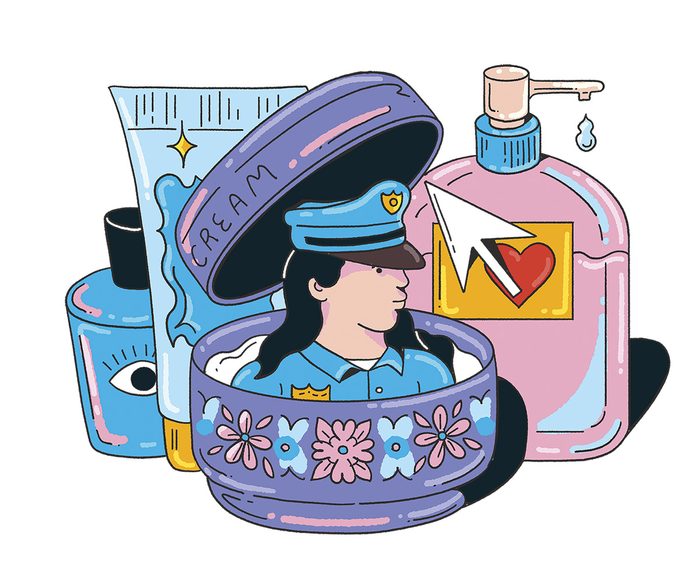
Ways to break free from abuse
People who are trapped with an abusive partner now have potentially life-saving new ways to send an S.O.S.
Police in South Korea have adopted a campaign called “Knock Knock,” which allows victims to discreetly report abuse by dialling 112 and tapping any number twice. This triggers the system to send a link to the phone via text. When the user clicks on it, police can pinpoint the victim’s location using the phone’s GPS and even watch a live stream of what’s happening through the phone’s camera. Meanwhile, a Polish high-school student is using the cover of online shopping to fight abuse. In 2021, Krystyna Paszko launched a fake online cosmetics shop and got the word out to her social media contacts that it’s actually a lifeline for victims.
When someone visits the Chamomiles and Pansies Facebook page to buy a product, such as a cream, they are actually connected with a psychologist. If someone “places an order” using their address, it prompts a home visit from authorities, similar to what would happen if the victim had called the police for help. The initiative helped as many as 350 people in the first year.

Rewilding big cities
A little green space goes a long way, and Madrid, Spain, one of Europe’s largest cities, is leading the way with urban rewilding.
It took nearly a decade of construction to complete, but the city’s Madrid Río Project moved sections of the multi-lane M-30 freeway to underground tunnels, allowing people to picnic where cars once whizzed by. The desperately polluted Manzanares River has been cleaned up, to the point that otters are being seen there for the first time in years. The city has planted trees, widened waterways, and built meadows and beaches.
After the project’s completion in 2015, a study found big reductions in noise and air pollution; the researchers estimated a reduction of more than 30,000 metric tonnes of CO2. One woman who lives along the river, Carmen Muñoz, told a reporter for Politico that she “no longer wakes to the noise of honking cars, but rather to the sound of birds singing in the trees.”
The city isn’t done yet: Next, it plans to encircle itself with a forest by planting roughly 1.5 million trees, mostly saplings. “We will be constructing what is, in effect, a 75-kilometre-long metropolitan forest,” Madrid city councillor Mariano Fuentes said in an interview with Geographical magazine.
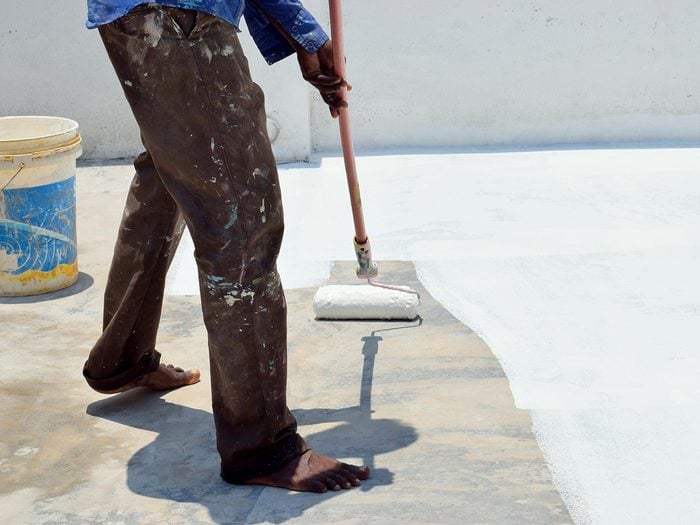
Paint that cools
The northern hemisphere experienced the warmest summer on record last year. One man has a cool solution: Xiulin Ruan, a professor of mechanical engineering at Purdue University in Indiana, has come up with a special formula that boosts the reflective power of white paint, reducing the temperature of the roof’s surface by up to 13 degrees C at midday.
Ruan’s paint—containing high concentrations of light-reflecting barium sulfate—could reduce air-conditioning needs by up to 40 percent. While typical white paint will help keep things cool by reflecting 80 to 90 percent of sunlight, this formulation reflects 98 percent. Ruan expects the paint to be commercially available this year.
Read 20 ways to keep your house cool without air conditioning.

Infection-detecting stitches
Dasia Taylor was just 17 when, in 2021, she put her inventive mind to solving a very common medical complication: infections after surgery. Globally, it happens in around one in 10 patients, according to the World Health Organization, and can be a real hazard in caesarian sections. Taylor, working with her chemistry teacher in Iowa City, Iowa, designed sutures that change colour when infections develop.
How does it work? Skin is naturally acidic, with a pH value of five or so. If infection develops, pH levels go up. Taylor discovered that some vegetables change colour depending on their acid content; beets, it turns out, go from bright red to dark purple at a pH of nine. So she dyed her suture threads with beet juice; the thread goes from red to purple when a wound is infected. That means a patient can be treated quickly with antibiotics, treating the infection before it becomes serious. After winning several awards, Taylor is currently seeking to patent her product.
Read about the health benefits of beets.
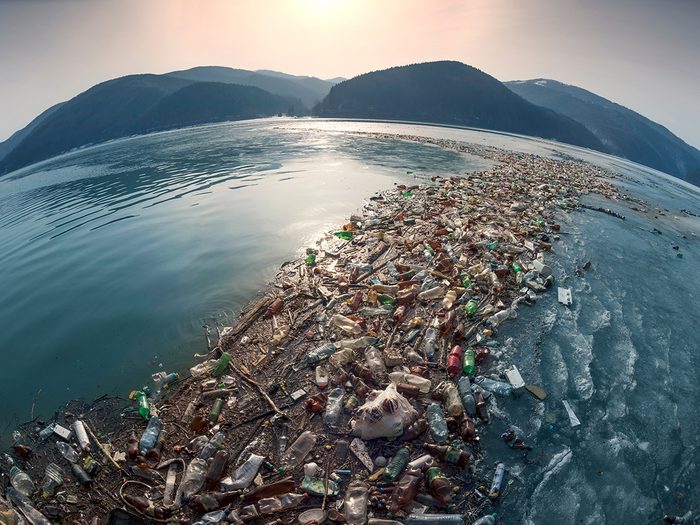
A trash-catcher for oceans
There are as many as 171 trillion pieces of plastic floating around in our oceans. What can be done to stop this outward flow of trash, most of which comes from rivers polluted by communities located alongside them?
German industrial designer Mauritz Schulz has designed “TrashBoom,” a kind of floating barrier, not unlike a swimming-lane marker, that stretches the width of a given river and acts as a net, blocking discarded bottles and bags before they can drift out to sea.
So far, the simple device is primarily in use in Indonesia and India—where it has stopped more than 900,000 kilograms of garbage from entering the ocean since April 2021. The instructions for making the inexpensive Trash-Boom are available online, and other organizations are now applying this open-source technique. Sungai Watch in Bali, for example, is deploying booms, while a company called Pangea Movement, also based in Bali, has organized river clean-ups in 11 countries so far, and hopes to tackle 100 of the world’s most polluted rivers.

An addiction-preventing pill dispenser
Opioid addiction is one of the greatest public-health crises of our times. It often starts with a prescription for medication to ease pain and it can escalate quickly.
As a student at New York University, Artin Perse watched his uncle get hooked on opioids as he recovered from injuries he suffered in a car accident. It inspired Perse to do something to help prevent addiction, so he designed a device that dispenses pills to match what your doctor prescribed.
In between electronically timed releases, the bottle cannot be opened. (It is meant for people in early stages of managing pain, rather than addicts.) Perse went on to found a company called Levl that uses the same design to help people with psychiatric medications. The dispenser is still in the trial phase, but Perse hopes to make it available within a year.
Read about how no one is immune to opioid abuse.